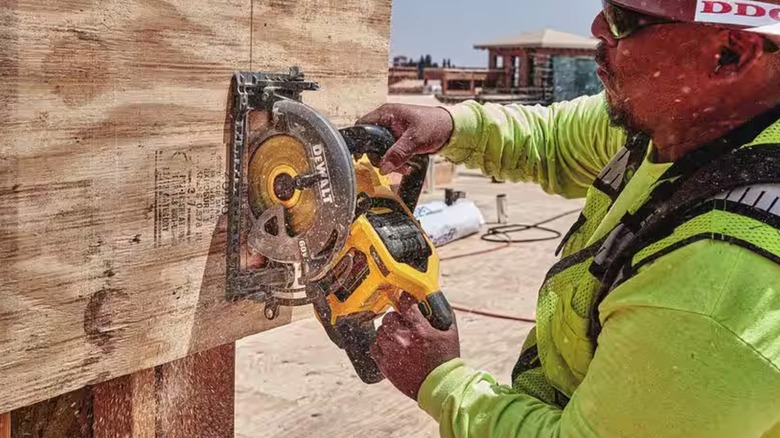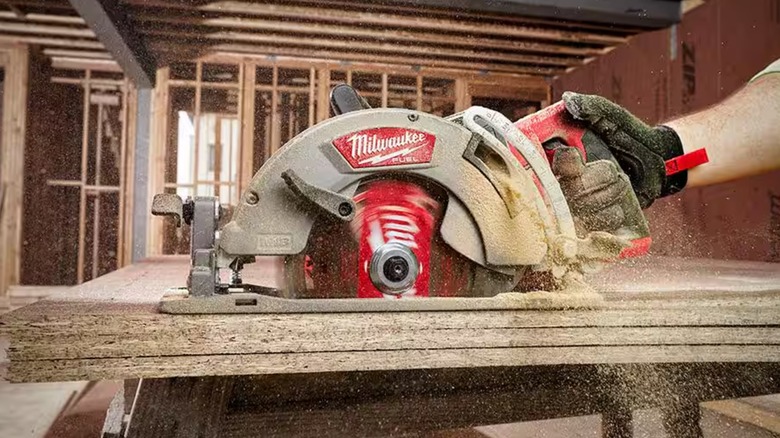How A Worm Drive Saw Is Different From Other Circular Saws, Explained
We may receive a commission on purchases made from links.
When you think of a handheld circular saw from a typical hardware brand, you're probably thinking of a direct drive saw, also known as a sidewinder. These saws are fairly compact and lightweight, thanks in large part to the fact that their motors are installed parallel to the blade, making them good for beginners. However, what if you installed that motor somewhere else on the tool, specifically behind the saw instead of next to it? The result would be a slightly different type of saw, known as a worm drive saw.
A worm drive saw, named for the distinct worm-shaped gear in the center, has its motor located in a dedicated housing at the back of the tool. Rather than spinning up the saw directly, the motor delivers power through that worm-shaped gear, which then transfers it to the saw at a 90-degree angle. The result is a saw that's generally more powerful than its sidewinder siblings, though at the cost of greater weight and size. What exactly does a heavier, stronger circular saw bring to the table that a smaller one doesn't, though? In a word, convenience, at least in operation if not ownership.
A worm drive saw is larger and heavier and produces more torque
The obvious difference between a worm drive saw and a sidewinder, at a glance, is that the handle on the worm drive is further back from the saw proper. Because the motor is built into its own casing and separated via the worm gear, your grip is placed further away from the cutting edge. Of course, all this extra hardware naturally makes a worm drive larger and heavier, which can make it more difficult for some workers to use than a smaller sidewinder. Additionally, the presence of the worm gear between the motor and the saw sucks up some rotational force, reducing the saw's overall spin speed.
If you can handle the weight and reduced speed, though, a worm drive saw does bring its own advantages to the table. The big benefit is that the extra load-carrying capacity of the worm gear allows the saw to generate more powerful torque, cutting more easily into thicker materials. The longer handle distance also gives you some extra reach, which makes it easier to cross-cut through a big sheet while keeping your hands away from the danger zone. The extra clearance is also nice for making plunge cuts.
There are a few other small, yet potentially affecting differences. For one thing, worm drive saws typically place the handle to the right of the blade, while sidewinders place it on the left. This could be more or less comfortable depending on whether you're left or right-handed. Additionally, since a worm drive has a gear train, it needs to be manually oiled, which is a mildly annoying chore.

